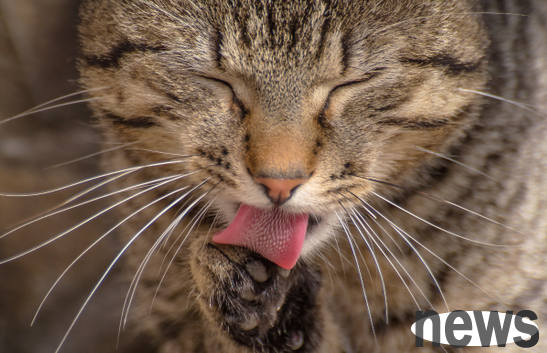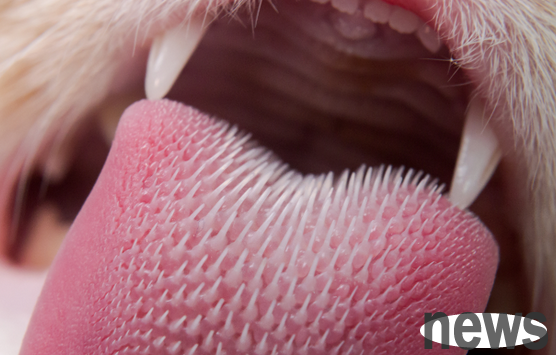Did the cat's tongue be thorned?
What is the "thorn" on the cat's tongue?

The scientific name of these "barbs" is papillary, and the component is keratin (the same as the component of nails).
looks a bit dense and fearful, but it is of great use!
Assisted feeding:
In the wild, these barbs can remove the meat from the bones, making the prey that has finally been caught for the best use.
In addition, barbs can also deliver food to the back of the mouth.
ps.The characteristics of cat tongues make it easy for them to hook into linear objects and difficult to vomit out. If they enter the gastrointestinal tract, they are very urgent!
Natural "comb":
Fine papillary-like protrusions can effectively clean the body surface, remove dust, dander, and fallen floating hair, and improve subcutaneous blood circulation and allow even oil distribution.
However, the hair under combing is often swallowed by cats, and cats may vomit hairballs or get "hairball syndrome".
Parents must comb their hair frequently~
Effective cooling: The bent shape of the barb is able to absorb water using surface tension. Although each barb can only bring out about 4.1 microliters of saliva, in one of the main ways to dissipate heat by transferring 48 ml of saliva to the hair in one day.
Feel the taste:
Dogs and cats are not as sensitive as humans. In terms of the number of taste buds, there are about 9,000 humans, about 1,700 dogs, and 473 cats.

cats can recognize sweet, salty, bitter, sour and umami.
They feel much less about sweetness than humans and dogs, and some cats seem to like sweets, which may be attracted by the aroma of fat rather than sugar.
Cats hate sourness and bitterness and like umami, which is one of the reasons why they love meat.
Helps drinking water:
Rather than saying "drinking water" and "licking water", it is better to say "watery".
The cat curls the tip of the tongue backwards, and the plane formed at the bottom briefly contacts the water surface, and then quickly retracts it, driving the water to form a "reverse gravity column", closes its mouth before the water falls and holds the water.
For this reason, the water level is too shallow, the area is too small, and the height of the water bowl is too low or too high, which will affect the cat's drinking water. The purpose of this evolution is supposed to avoid drinking contaminated water.
Dogs and cats drink water similarly, but the dog's tongue stretches deeper, resulting in greater water splashes.
Health and Health:
You can also understand the health of the hairball by observing the cat's tongue.
Under normal circumstances, the cat's tongue is pink, dry, and has no extra saliva.